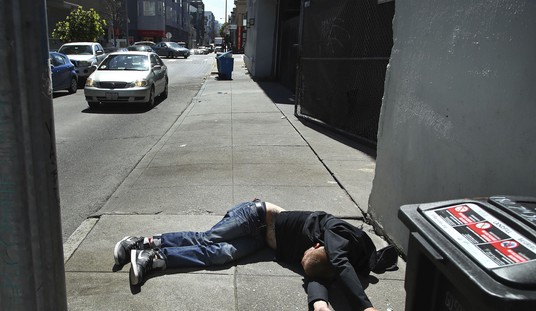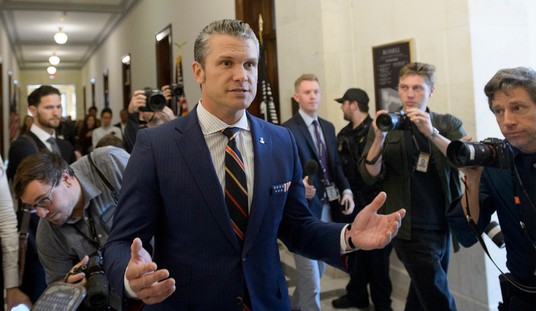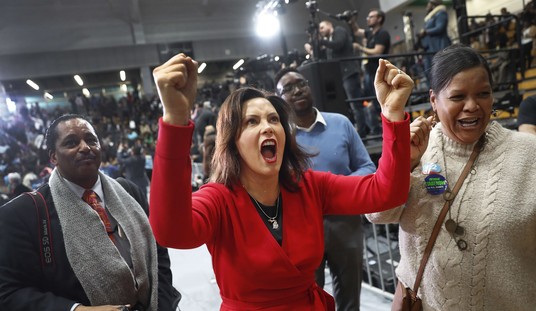For all the things Joe Biden hasn’t done or has done badly since assuming the presidency, no one can deny he and his handlers successfully created a roadmap for getting there that previous candidates either hadn’t contemplated or lacked the audacity to employ.
In addition to cobbling together the right combination of voting blocs, the Biden team correctly deduced that he could go all in on the one interest group that matters above all others — Big Labor.
After promising during a 2020 speech to the AFL-CIO he’d be the “most pro-union president you’ve ever seen,” unions in general and public-sector unions in particular began lavishing their support — and millions of their members’ dues dollars — on Biden. Consequently, he rarely found it necessary to even leave his basement and answer hard questions for the remainder of the campaign.
Once in office, Biden made little secret of where his loyalties lay. Officially, he allowed the American Federation of Teachers (AFT) to dictate policy to his health officials regarding when COVID-shuttered schools could reopen, bailed out union multi-employer pension plans with public money, and proposed an infrastructure restoration plan that was little more than a billion-dollar giveaway to unions.
Additionally, Biden unveiled a $400 billion American Jobs Plan designed to force thousands of Medicaid home healthcare providers back into the union membership they declined following the U.S. Supreme Court’s 2014 ruling in Harris v. Quinn.
Unofficially, Biden waited weeks to survey the damage in fire-ravaged Hawaii and still hasn’t visited East Palestine, Ohio, where a 38-car train wreck last February created a huge hazardous waste disaster. But he saw fit to wade into a private-sector labor dispute by siding with the striking United Auto Workers and became the first sitting president in history to join a picket line.
On the international front, in June, the Biden administration appointed teachers’ union boss Randi Weingarten to a Department of Homeland Security (DHS) school safety committee, although it would be months before administration officials would admit to a problem at our open southern border. Weingarten, in case anyone forgot, inexplicably has visited Ukraine more than once for “diplomatic meetings” and videos demanding more aid to defend Ukraine’s border.
In short, the unions are pulling the strings of this administration, and increasingly, Americans are viewing it as a disaster.
Nonetheless, the Biden formula has inspired a new crop of imitators.
In fact, Govs. Gavin Newsom (CA), J.B. Pritzker (IL), and Josh Shapiro (PA) — all reputed to be eyeing a future run for the Oval Office — have taken the game to the next level by leveraging millions of their own state’s tax dollars to score points with the unions preemptively.
In California, for example, Newsom two years ago signed a bill obligating the state’s taxpayers to cover the cost of government union member dues to the tune of $400 million. This year, he’s backing a bill that would empower unions to block the “… passing of any statute or ordinance that interferes with, negates or diminishes the right of employees to organize and bargain collectively over their wages, hours and other terms and conditions of employment and workplace safety.”
Moreover, Newsom was quick to announce longtime Service Employees International Union (SEIU) labor leader Laphonza Butler to succeed Sen. Dianne Feinstein after Feinstein’s passing. Senator-designate Butler organized healthcare employees in Baltimore, Milwaukee, and Philadelphia before moving to California in 2009, where she served as president of SEIU Local 2015 and the California SEIU State Council. Butler also served as an advisor on Vice President Kamala Harris’ then-presidential campaign.
It is important to note that Newsom is so bent on filling the seat with a labor ally, that he chose one who reportedly lived in Maryland until just one month prior to Feinstein’s passing.
Meanwhile, in Illinois, Pritzker’s new collective bargaining agreement with AFSCME gifts its 35,000 members a nearly 20 percent pay raise over four years — including a 4 percent raise this year — which adds up to a 61 percent better deal than they got during their last round of negotiations.
Not to be outdone, Pennsylvania’s Shapiro in September signed a new pact with AFSCME calling for a 22.1 percent salary hike over four years. That’s a total annual hit to Pennsylvania taxpayers of $1.9 billion in 2026-27 for a workforce that last month consisted of 55,556 workers.
Call it an investment — with someone else’s money — in a far bigger prize.
According to a report by the National Institute for Labor Relations Research (NILRR), unions spent an estimated minimum of about $1.7 billion dollars during the 2022 midterm election cycle.
Included in that figure is spending by Political Action Committees, or “PACs,” controlled by unions. According to independent government watchdog OpenSecrets, PACs accounted for $55 million of political contributions from 2021 to 2022.
A total of 183 union PACs contributed to political candidates, with $7 million donated to Republican candidates and $48 million to Democrats.
The report by NILRR also notes that unions frequently camouflage their political activity under accounting headings such as “Union Administration,” “Contributions, Gifts, and Grants,” and “Representational Activities.”
It’s shady, but when you back the winning horse, you get away with it.
In Biden’s case — and others are already gambling the scheme will work for them, too — it’s arguable that if he wasn’t one, he could never have become the other.
Aaron Withe is CEO of the Freedom Foundation. www.FreedomFoundation.com












Join the conversation as a VIP Member